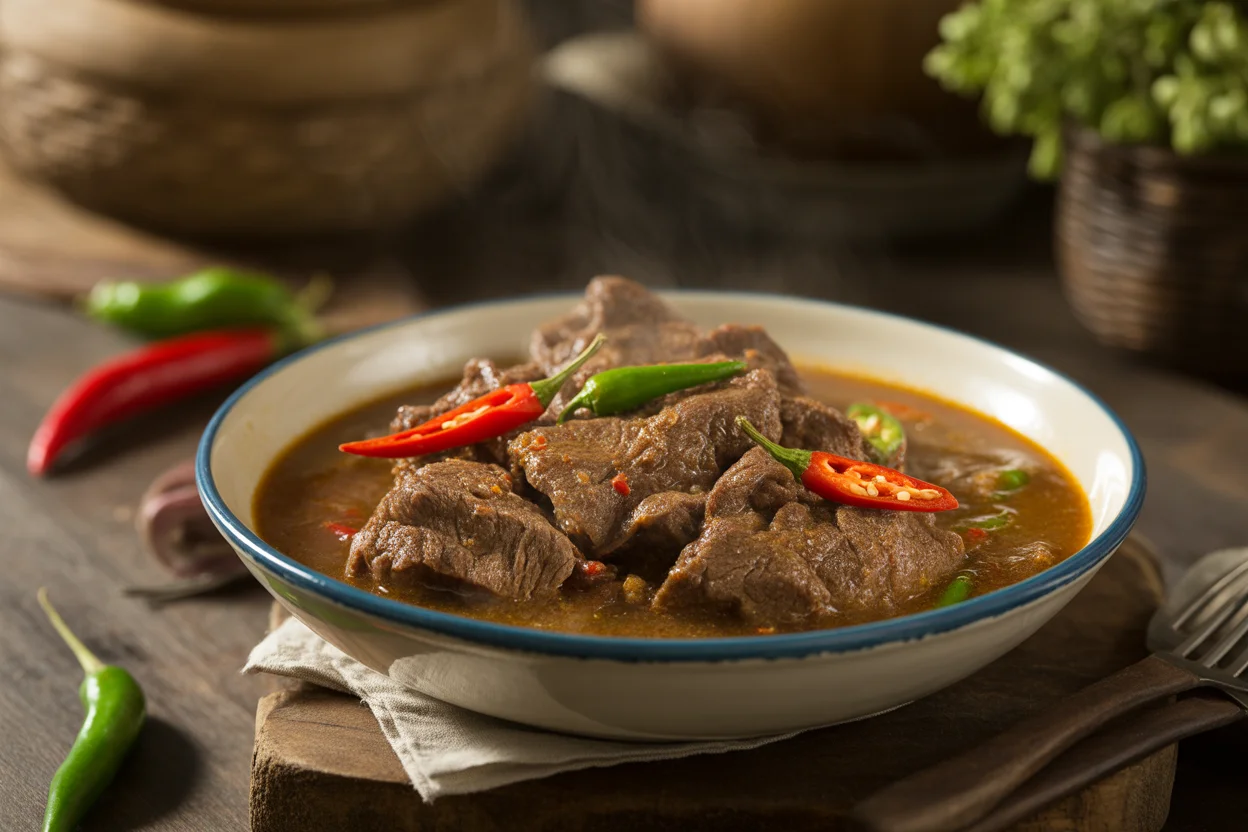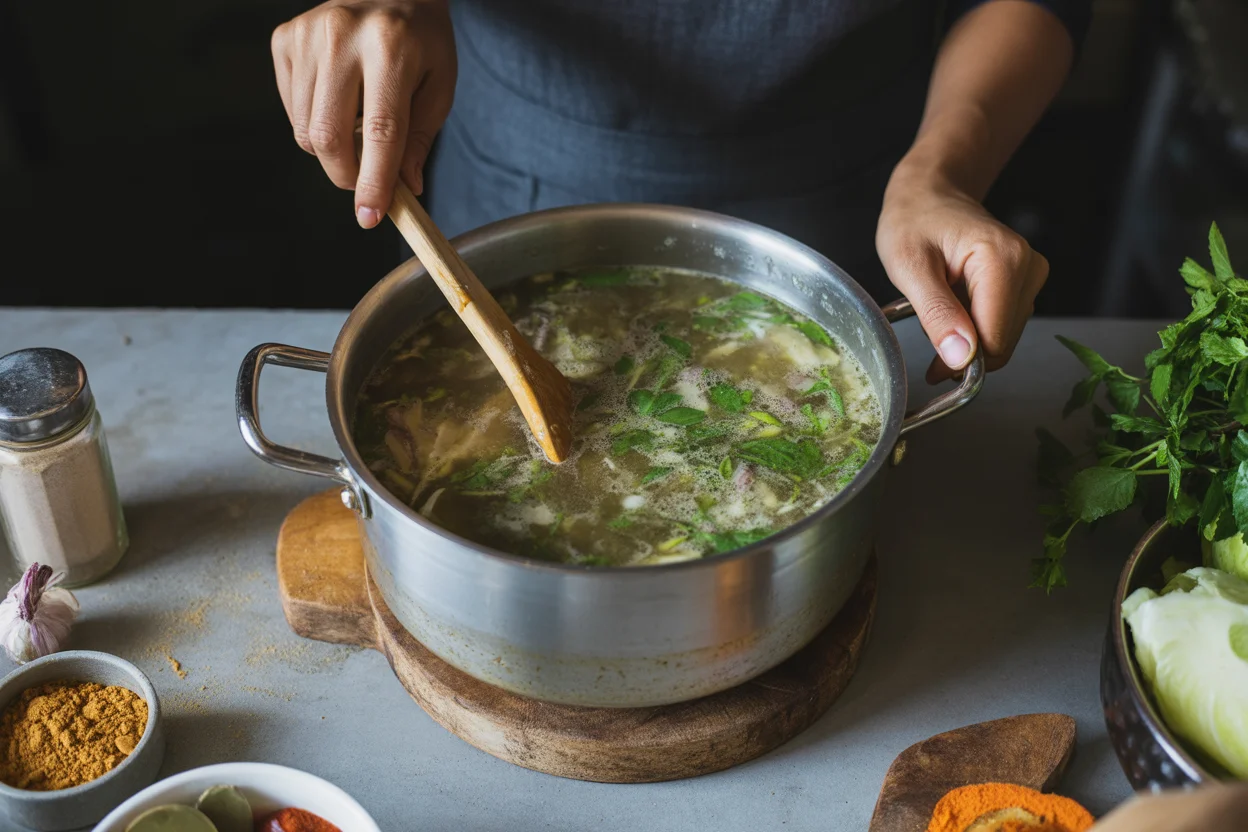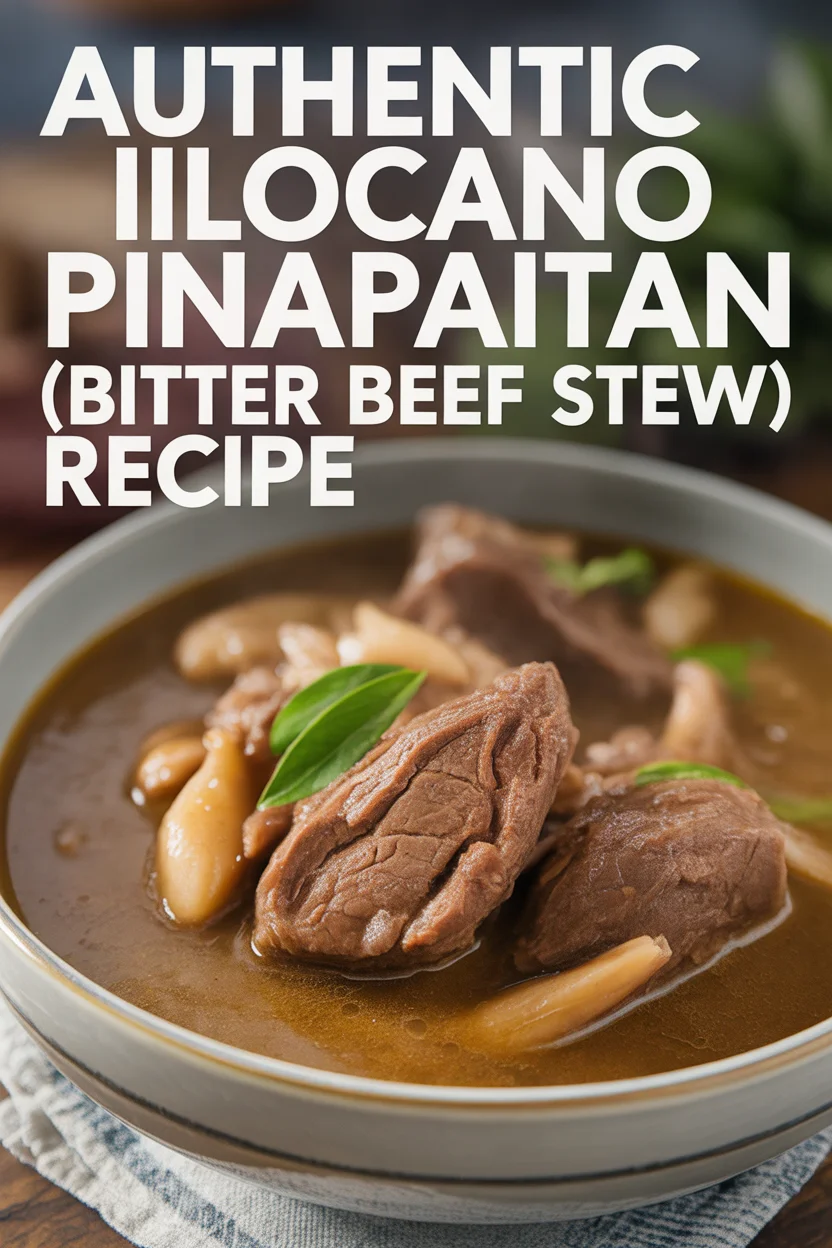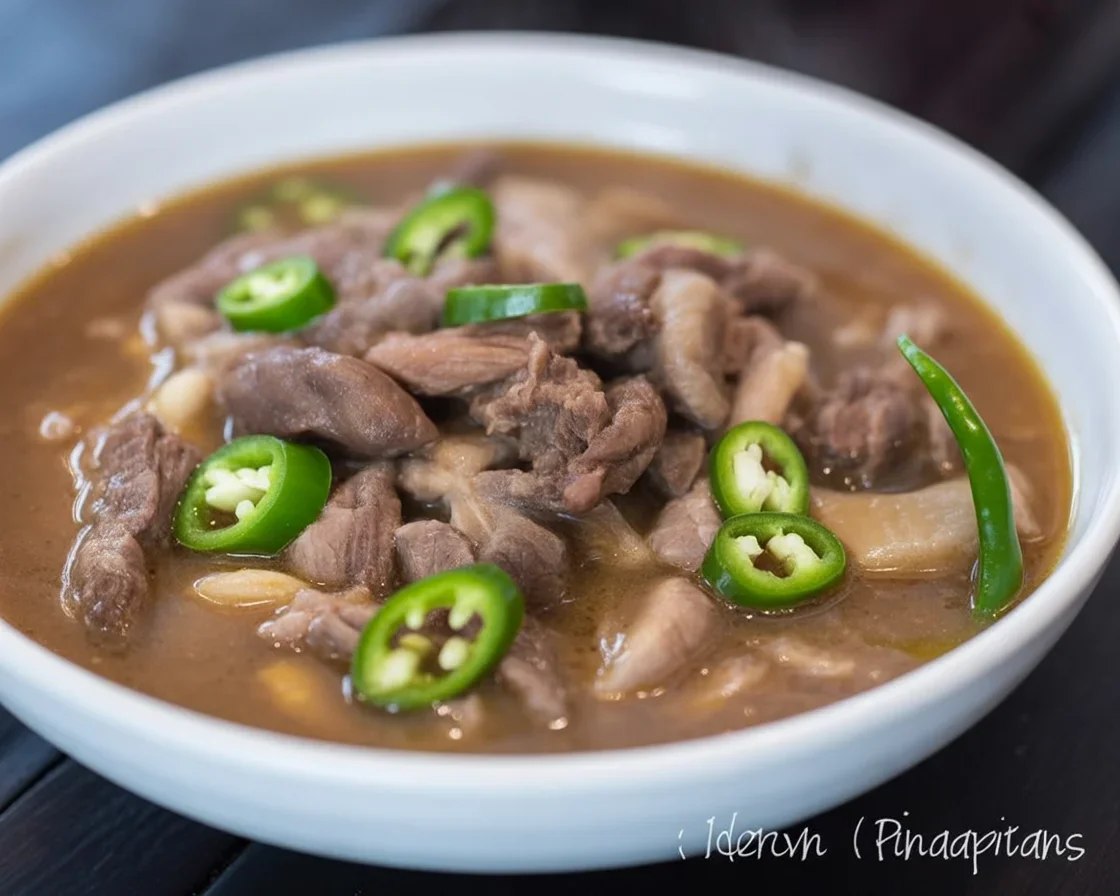Filipino pinapaitan is one of those dishes that’s kinda divisive. Some folks LOVE that wild bitter kick, and some just—well, not so much. Ever sat at a Filipino fiesta and wondered, “How is everyone wolfing down this greenish, steamy stuff with such happy faces?” Don’t sweat it, you’re not alone. I used to stay far away from authentic Ilocano pinapaitan (bitter beef stew), until a super persistent uncle basically forced a bowl into my hands. Changed my life, honestly. Pinapaitan might look intimidating, especially if you’re more into chicken tinola or sweet kid-friendly recipes, but give it a whirl. It’s meaty, bitter, sometimes spicy, and weirdly satisfying with heaps of rice.

Intro to pinapaitan
Alright, let’s chat about what makes authentic Ilocano pinapaitan (bitter beef stew) such a legend. First off, it’s a pride dish from the Ilocos region in the northern Philippines. Now, just so we’re clear—it’s not your everyday beef stew. The magic (or the scary part, depending on how brave you are) is the inclusion of beef innards: tripe, liver, sometimes the heart, and, most famously, the addition of gall. Yeah, that tiny, bitter green liquid from the bile. That’s what gives Filipino pinapaitan its name and bang.
If you grew up with this dish, you probably remember waiting for it on rainy days, maybe smelling that funky aroma drift into the street. If you’re new, fair warning—the bitterness is intentional. It’s not an accident! Some people try to play it safe, using less gall or even swapping ampalaya (bitter gourd) for extra bitter vibes, but honestly, the real deal pinapaitan always brings out strong opinions. I think you should at least try it once—dare you to resist the bite.

Ingredients
Okay, deep breath. Here’s what you’ll need for a classic, straight-up authentic Ilocano pinapaitan (bitter beef stew). Don’t worry, most Filipino supermarkets or groceries with a meat section will have these, but yeah, you might need to ask the butcher for help.
- Beef innards (tripe, liver, small intestines, heart if you’re bold)
- 1-2 pounds of beef brisket (optional, makes it meatier)
- Beef bile (ask your butcher, this is the key ingredient for bitterness)
- 1 thumb-sized ginger, sliced thin
- 1 bulb garlic, smashed and peeled
- 2 red onions, diced
- Green chilies (siling haba), for extra zing
- Fish sauce (patis)
- Lemon or calamansi juice (for a hit of tang at the end)
- Cooking oil
- Salt and pepper
Don’t let that list scare you off! Once you’ve got those funny-looking meats handled, it comes together pretty quick.
Preparing beef innards
Alright, this part is non-negotiable: clean your innards. You really can’t skip the cleaning step with authentic Ilocano pinapaitan (bitter beef stew). I know, it doesn’t sound thrilling, but if you don’t—whoa, that funky smell will knock you sideways.
Here’s my tried-and-tested way: rinse the tripe and intestines several times under cold water. Use salt and a splash of vinegar, then scrub that stuff like you’re mad at it. Boil everything once (just water, nothing fancy) for a good 10-15 minutes, then dump that water and rinse the meats again. Now—and only now—slice them into bite size. It makes the soup so much cleaner tasting, really.
A family friend once told me, “If your kitchen smells like the market on a hot day, keep cleaning.” He wasn’t wrong. My earlier attempts, let’s just say, had everyone wrinkling their noses.
Achieving bitterness
You know what makes authentic Ilocano pinapaitan (bitter beef stew) different from all the rest? The BITTERNESS. Like, unapologetically bitter—not a hint, not “oh maybe,” but full-on. The secret, as any stubborn Ilocano tito will insist, is the gall or bile. Trust me, go slow when adding this stuff. It’s powerful.
Some folks throw in a little at a time, tasting as they go. You want a balanced bitter, not a nuclear assault. (Yep, I learned the hard way.) If you totally can’t find bile, okay, the soup will still taste fine with extra ampalaya, but honestly—it’s not the real deal. Pinapaitan, at its core, is about courage and flavor. Play with your bile, see what you like.
Some old-timers even claim the “first taste” of perfectly bitter pinapaitan is like a badge of adulthood. If you make a face, don’t worry, you’ll get used to it.
Cooking steps
Once you’ve got the hard parts done, cooking authentic Ilocano pinapaitan (bitter beef stew) is not so daunting. Start by sautéing your garlic, onions, and ginger in a bit of oil till they smell amazing—if you hear a sizzle, you’re on track.
Toss in your prepped innards and brisket, stir around. Let the beef bits get some color before the next step. Now, pour in water, enough to cover everything. Throw in the green chilies. Bring to a boil, then simmer for at least an hour. Some families go longer for circus-level tenderness.
Big moment: Add the bile a tablespoon at a time, tasting after each addition. Too much bitterness can sneak up fast. When the stew hits your preferred level of drama, salt, pepper, and a shot of fish sauce complete the transformation. Finish with a splash of lemon or calamansi at the table. Bam, you’re done.
“I was honestly so scared to try pinapaitan. But after smelling it simmering for hours, curiosity won out—I took a spoonful, and now I ask for it every time I’m home in Ilocos. That bitter flavor is unforgettable!”
Serving with rice
Look, there’s really only one way: heaps of fluffy, hot rice. You need all that rice to scoop up the soup and mellow the fire. Even folks who swear they’re “watching their carbs” make an exception here.
Best way to enjoy it?
- Huge bowl of authentic Ilocano pinapaitan (bitter beef stew) ladled piping hot
- Squeeze of calamansi or lemon on top (just try it—it brightens up all the beefy flavors)
- Bed of white garlic rice (or, if you’re feeling fancy, see garlic sinangag)
- Steamed veggies (just for color, mostly—let’s be real, the stew and rice are the stars)
Add a cold drink, maybe play classic OPM in the background, and presto, it’s a five-star restaurant… okay not really, but it feels that way.
Safety tips
Now, don’t mess around with undercooked innards. I’m always nervous about this, so just a heads up: Use fresh, properly cleaned beef. Don’t skip the initial boil and rinse. If you get bile, double check it’s from a trusted butcher. Store extras in the fridge and reheat well—nobody wants a dodgy tummy.
Keep some things in mind: Wash hands and utensils after touching raw meat (your kitchen isn’t a science experiment). If anything smells “off,” dump it. Better safe than sorry—my cousin once tried to shortcut and, let’s just say, we all missed a birthday party that week.

Common Questions
Q: Can I make pinapaitan without bile?
A: Sure, but it’s not quite the same. Try ampalaya for bitterness, but the taste will be milder.
Q: Do I really need all the innards?
A: No, you can stick to tripe and brisket if that’s all you can get.
Q: Is pinapaitan spicy?
A: Only if you add green chilies. Otherwise, it’s more about bitterness than heat.
Q: How do I store leftovers?
A: Keep in an airtight container in the fridge for three days. Reheat well before eating.
Q: What if I overdo the bitterness?
A: Add more water, or a bit of rice, to mellow it out. Lemon juice helps too.
Whew, that’s a lot to take in, but now you know how to handle authentic Ilocano pinapaitan (bitter beef stew) like an old pro. Some dishes are all about comfort, but this one—wow, it’s about boldness. If you’re curious about the cultural history, check out Pinapaitan – Wikipedia. Want to see another home cook’s approach? This Beef Papaitan – Panlasang Pinoy guide gives another spin. However you try it, honest opinion: brave the bitterness, and you might just end up loving it, too!
Ilocano Pinapaitan (Bitter Beef Stew)
Ingredients
Beef Components
- 1-2 pounds beef innards (tripe, liver, small intestines, heart if you’re bold) Fresh and clean, essential for authenticity.
- 1-2 pounds beef brisket Optional, but adds meatiness.
- to taste beef bile Ask your butcher; this adds the distinctive bitterness.
Vegetables and Seasonings
- 1 thumb-sized piece ginger, sliced thin Adds warmth and flavor.
- 1 bulb garlic, smashed and peeled Essential for sautéing.
- 2 pieces red onions, diced For sweetness and depth.
- to taste green chilies (siling haba) Optional for extra spice.
- 2 tablespoons fish sauce (patis) For seasoning.
- 1 tablespoon lemon or calamansi juice To finish the dish with brightness.
- 2 tablespoons cooking oil For sautéing.
- to taste salt and pepper To season.
Instructions
Preparation
- Clean the innards by rinsing them several times under cold water.
- Scrub with salt and a splash of vinegar, then boil for 10-15 minutes.
- Dump the water, rinse again, and slice into bite-sized pieces.
Cooking
- Sauté garlic, onions, and ginger in cooking oil until fragrant.
- Add the cleaned innards and brisket, stirring until they color.
- Pour in enough water to cover the ingredients and add green chilies.
- Bring to a boil, then reduce to a simmer for at least 1 hour, longer for tenderness.
- Slowly add beef bile a tablespoon at a time, tasting after each addition until desired bitterness is achieved.
- Finish with salt, pepper, fish sauce, and a splash of lemon or calamansi.

